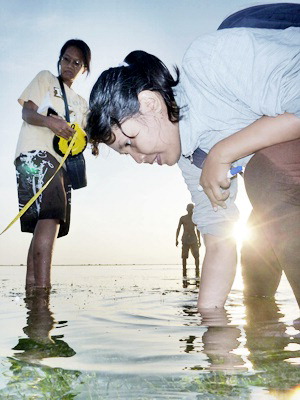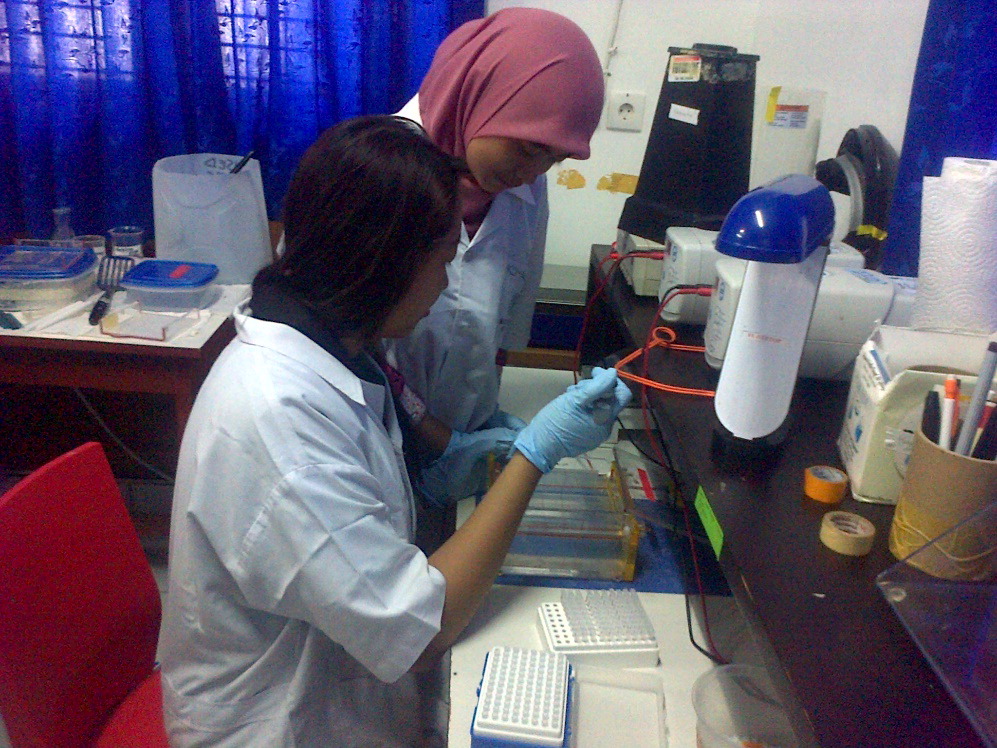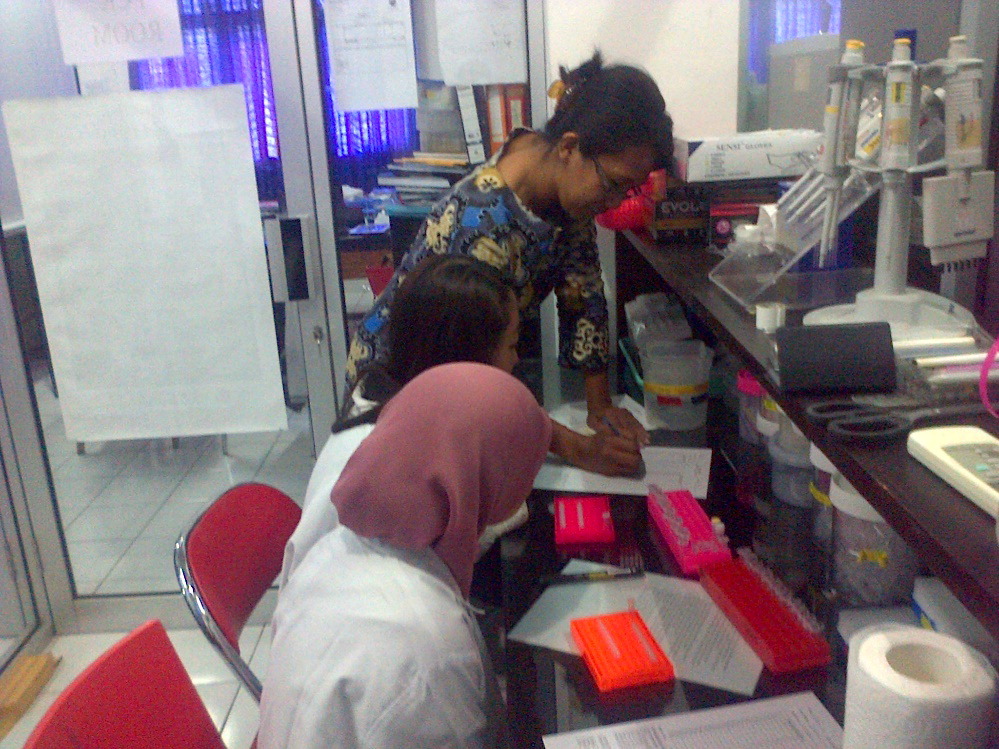The researchers undertook four seagrass monitoring campaigns. The PI and her team conducted the first activity at Dowora Beach, Tidore, Ambon, in collaboration with academic staff from the Faculty of Fisheries and Marine Science at Universitas Khairun, Ternate. The second monitoring campaign was conducted at Serangan Beach, Bali, with students from the Biology Department of Udayana University. Students learned about seagrass species, identification, and function as well as seagrass monitoring techniques. Additional field research campaigns took place in Kondang Merak Beach and Waru-waru Beach, in Malang, East Java, as well as at Alor Island.
Among their findings was a low diversity of seagrass at Kondang Merak Beach, with only a single species,
Syringodium isoetiolium, and Waru Waru Beach, with two species identified,
Halodule uninervis and
Halophila ovalis. At Deere Beach on Alor, the diversity of seagrass was higher with coverage areas reaching 100%. The researchers identified five species:
Enhalus acoroides, Syringodium isoetifolilum, Cymodocea rotundata, Cumodocea serrulata, and
Halodule uninervis. In Tidore, researchers found six seagrass species, and eight species at Serangan Beach in Bali. The team also worked to analyze DNA sequence data of
Enhalus acoroides from the Lesser Sunda region (Bali, Lombok, Flores, Kupang) and eastern Indonesia. The PI published the results in an academic article and presented the findings at an international conference on global resource conservation.
During the PEER project, the team conducted workshops on seagrass for high school and university students in Bali. About 40 high school students and 60 university students learned to identify seagrass species and conduct seagrass population monitoring. The PEER group also offered a DNA extraction and RAPD analysis workshop to students and staff of partner universities, and they revised the content of undergraduate and graduate courses at Udayana University, including incorporating a special lecture of plant DNA analysis. As a result of the project, the team received a $7,000 grant from the Indonesian Ministry of Research, Technology and Higher Education to conduct a related study on genetic and environmental aspects of production of tocopherol (Vitamin E) from
Enhalus acoroides.
PublicationsI Nyoman Giri Putra, Yuliana Fitri Syamsuni, Beginer Subhan, Made Pharmawati, and Hawis Madduppa. 2018. Strong genetic differentiation in tropical seagrass
Enhalus acoroides(Hydrocharitaceae) at the Indo-Malay Archipelago revealed by microsatellite DNA. PeerJ 6:e4315.
http://dx.doi.org/10.7717/peerj.4315 Made Pharmawati and I Nyoman Giri Putra. 2016. Comparison on DNA Extraction from Enhalus acoroides Using CTAB and Commercial Kits.
Proceedings of The International Conference on Marine Biodiversity 2016, pp. 111-113.
Made Pharmawati, Uul Shovi Nurkamila, and Stevanus. 2016. Short Communication: RAPD fingerprinting key and phylogenetic of nine seagrass species from Sanur coastal water, Bali, Indonesia using matK sequences. Biodiversitas 17(2): 687-693.
https://doi.org/10.13057/biodiv/d170243 Made Pharmawati and Eka Fibayani Imaniar. 2016. PCR-RFLP and Sequencing of trn S/trn fM Fragment of Enhalus acoroides from Sanur Coastal Waters, Bali, Indonesia: A Preliminary Study.
The Journal of Tropical Life Science 6(2): 118-122.
https://doi.org/10.11594/jtls.06.02.10 Made Pharmawati, I Nyoman Giri Putra, Yuliana Fitri Syamsuni, and I Gusti Ngurah Kade Mahardika. 2015. Genetic Diversity of Enhalus acoroides (L.) Royle from Coastal Waters of Pramuka Island, Lembongan Island, and Waigeo Island, Indonesia, Based on Microsatellite DNA.
Advanced Science Letters 21: 199–202.
https://doi.org/10.1166/asl.2015.5861 Maliza Kurnia, Made Pharmawati, Deny S. Yusup. 2015. Jenis-jenis lamun di Pantai Lembongan, Nusa Lambongan dan analisisnya dengan PCR ruas rbcL [Seagrass species at Lambongan Beach, Nusa Lembongan and their analysis using PCR of rbcL fragment] [in Bahasa].
Jurnal Simbiosis III (1): 330-333.






